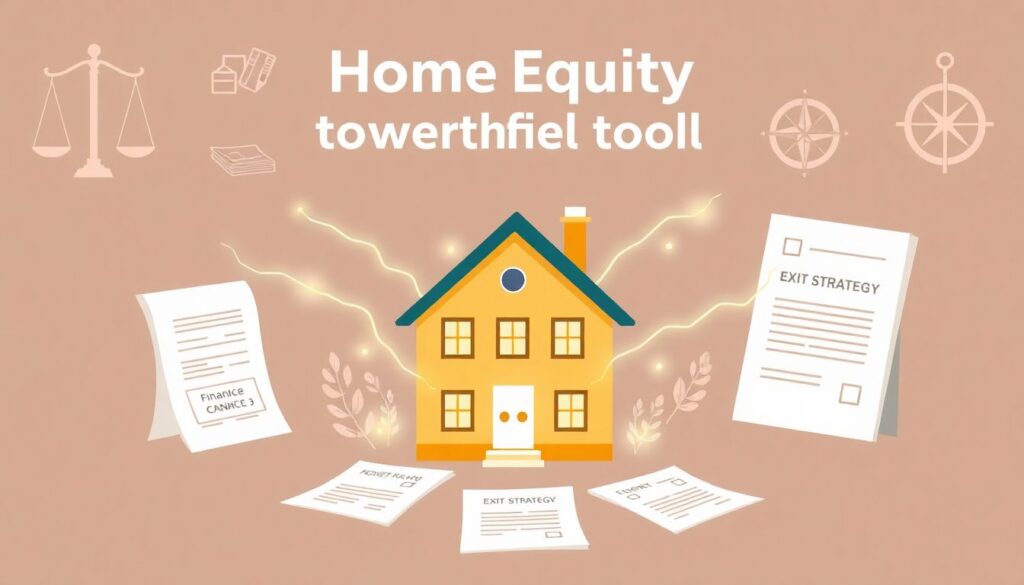Understanding Home Equity: A Financial Tool, Not Just a Number
Home equity is the portion of your property that you truly “own” — calculated by subtracting your mortgage balance from your home’s current market value. For many homeowners, this is their largest source of net worth. However, most never go beyond viewing it as a passive asset. Used strategically, home equity can become a powerful lever for building wealth, managing risk, and achieving financial flexibility.
Case Study: Turning Equity Into Long-Term Gains
Consider Anna, a 42-year-old graphic designer from Austin. She had $180,000 in home equity but was hesitant to touch it. After consulting a financial advisor, Anna took out a $100,000 home equity line of credit (HELOC) at 5.5% interest. Instead of splurging, she invested $60,000 into a well-performing REIT and used the rest to renovate her home, increasing its value by $85,000. Within three years, she saw a net gain of $45,000 after loan payments. Her case shows how leveraging equity with discipline can amplify your financial position.
Unconventional Uses of Home Equity
Most people think of home equity as a last resort for emergencies or renovations. But there are lesser-known strategies that can optimize its value:
1. Bridge Funding for Business Ventures – If you’re launching a side hustle or need seed capital, tapping equity can be safer than high-interest business loans.
2. Geoarbitrage – Sell your high-value home, buy a cheaper property elsewhere, and use the leftover equity to generate passive income.
3. Debt Optimization – Use equity to consolidate high-interest debts, but only if you have a strict repayment plan and avoid reaccumulating debt.
These strategies require careful risk assessment, but in the right hands, they can unlock financial mobility.
Alternative Methods to Access Home Equity
Traditional HELOCs and home equity loans aren’t your only options. Depending on your goals and risk tolerance, consider these alternatives:
1. Shared Equity Agreements – Instead of borrowing, you sell a percentage of your future home appreciation to an investor. No monthly payments, but you share future profits.
2. Reverse Mortgages (for 62+) – Ideal for retirees looking to access equity without selling their home. Use with caution, as long-term costs can be high.
3. Sale-Leaseback Models – Sell your home to an investor and rent it back, freeing up equity while staying in your home. Useful during transitions or financial restructuring.
Each method has trade-offs. Always align the option with your long-term financial goals, not just short-term cash needs.
Pro Tips and Equity Hacks for Advanced Users

Experienced investors and financial planners can use nuanced tactics to maximize equity without overexposing themselves:
1. Equity Laddering – Gradually access equity through staggered HELOCs tied to specific investment goals (such as college, business, or retirement).
2. Tax Efficiency – Use equity to fund investments with deductible interest, such as income-generating rental properties.
3. Liquidity Buffer Strategy – Use a HELOC as a financial safety net instead of holding large cash reserves. You only pay interest when you draw funds, preserving cash flow flexibility.
These techniques require discipline and financial literacy but can create a more resilient and dynamic financial plan.
Final Thoughts: A Powerful Asset When Used Strategically

Home equity is more than a number on your mortgage statement — it’s a dynamic financial resource. But like any powerful tool, its misuse can lead to long-term setbacks. The key is to integrate it carefully into your financial plan with a clear purpose, solid exit strategy, and professional guidance. Avoid using it to fund depreciating assets or lifestyle inflation. When approached wisely, home equity can be the silent partner in your journey toward financial independence.

